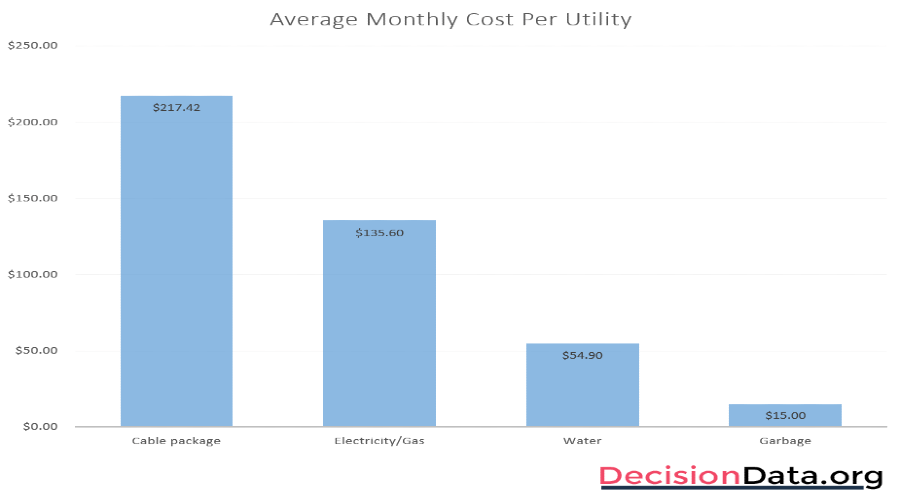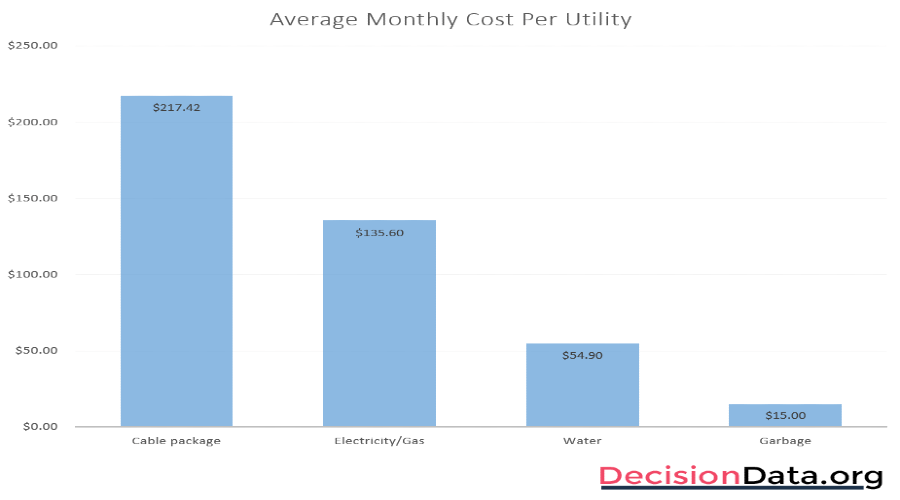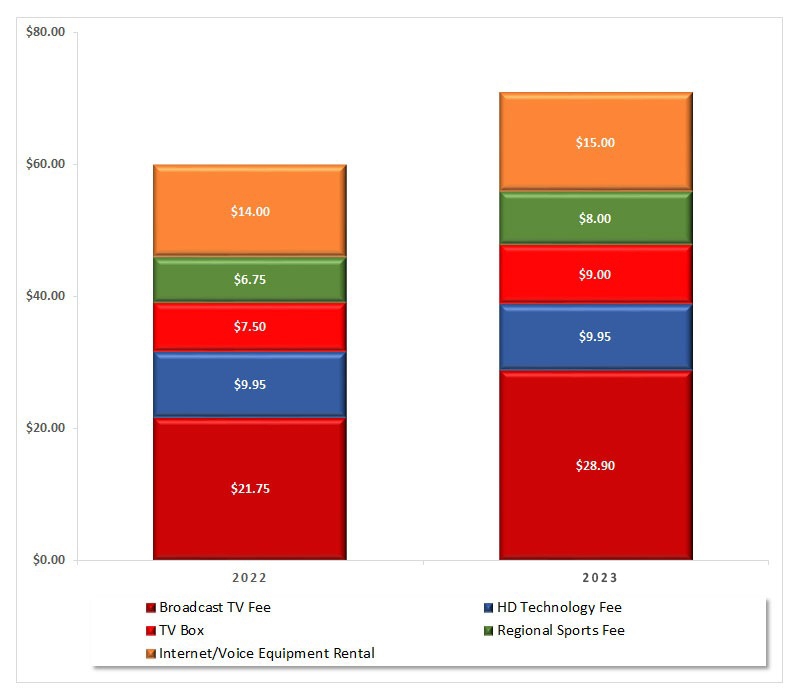The Average Cable Bill Now Exceeds All Other Household Utility Bills Combined
Fast Facts:
- The average household cable package is now $217.42 per month.
- The average household spends $205.50 per month on all major utilities combined (electricity, gas, water, sewage, garbage).
- The average household cable package cost continues to increase year-over-year.
It’s easy to set up autopay and forget how much we’re paying per month for any number of utilities and services. For example, if you were to ask the average person what their monthly water bill is, we’re willing to guess they might not have an accurate answer.
The same goes for cable bills. It’s rare to find a customer, especially one who signed up years ago and forgot about the monthly bill, to be able to recall how much they’re paying each month. In fact, if you were to ask most people what they are paying for their cable package, most would likely reference the special sign-up rate and not what the bill has probably turned into following that introductory period.
Late in 2019, Fortune reported another year of annual increases in the average cable bill. We wanted to dive deeper and compare this to the average cost of all other household utility bills. We found that in the last year, the average consumer now pays more for their cable package than they do for most other household utilities combined.
Given the continued annual increase to most cable bills, it doesn’t appear as if this trend will be slowing down anytime soon, either. We do expect to see the price of packages continue to increase on average in the coming years, given the most recent trends.
Using a mixture of publicly available data from municipal utility providers, Energystar.gov, Consumer Reports, and data sourced through third party research, we were able to calculate the following approximate averages per utility in the United States:

Sources: Municipal utility reporting, Consumer Reports 2019 study, Energystar.gov, Nationwide, Circle of Blue
One important thing we found in our research was how relatively expensive a cable bill is compared to other utilities for smaller households. The average cable bill stays relatively similar across household sizes, whether it’s one person living in a small apartment or a family of ten living in a large house. This is not true of utilities like electricity or water, with much wider scales for their average bill size depending on household size.
It’s normal for the average consumer to look into ways to save money on things like their electric or water bills through conservation efforts. But what we still don’t hear discussed more frequently is how to cut costs on what is becoming every household’s biggest utility bill. It’s not as if cable is an optional service anymore, with having internet access in the home being almost as important as electricity at this point.
Cut The Cord to Save on Cable Bills
To save real money and still get all the channels you love, you need to cut the cord. Reducing your bill by $1000+ per year requires multiple steps. First, install an antenna; second, buy your own equipment; third, make sure your WiFi is set up to maximize internet bandwidth and whole home coverage.
For example, most consumers simply don’t know that they are renting a $50-$80 dollar modem from their cable companies for anywhere between $10-$20 a month. Purchase your own equipment and immediately start saving.
For consumers looking to save money, the best place to start is by analyzing all monthly expenses and deciding where they can make cuts. The cable bill for most people will almost certainly offer some opportunity to cut costs. Take a look at your monthly bill and speak with StreamWise Solutions today if you have questions about how you can save money.
Originally published on March 10th, 2020 on decisiondata.org


